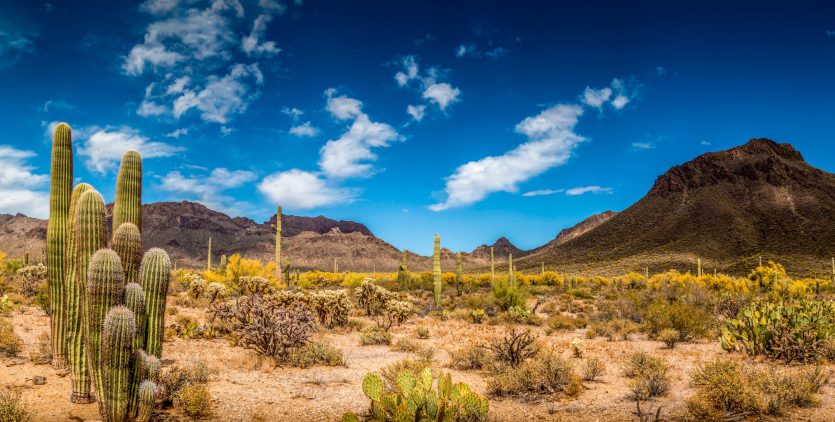The Toughest Bugs In The World
Bugs are considered to be the strongest creatures in the world when considering their level of strength proportional to their body, and many of these little critters are the most resilient organisms in existence. Below, you can check out some of the insects that blow the rest of Earth’s wild creatures out of the water.
Cockroaches, Nearly All Species
Cockroaches have long been rumored to be the species that will survive the end of the world. Famously depicted in the movie, Wall-E, the story goes that, when humans meet their end, this critter will be there to watch the world rejuvenated once again. So, what brought this story into existence? Studies have shown that cockroaches are significantly more resistant to radiation than nearly all other non-insect life forms on the planet. A human will die at an exposure of 1,000 rads (context: a CT scan is 2-3 rads), but a cockroach can withstand up to 10 times that.
Bed Bugs, Cimex lectularius
A critter that is unwelcome wherever it persists is the widespread Bed Bug. These bugs are known to live in human spaces from bedrooms to bars – anywhere you might take a seat to kick back and relax for a while. Public health experts have repeatedly advised the public that throwing out the furniture that has been infested by Bed Bugs is not quite a reliable method of prevention. Why? These organisms can survive for up to 1.5 years without food (AKA, your blood). Even placing them in the sun in black plastic bags, or applying pesticide isn’t a sure method of ridding your home of these invaders. You’ll have to do a lot more than that to get Bed Bugs to meet their maker.
Ironclad Beetle, Zopherus spp
One type of beetle takes the cake as one of the toughest bugs in the world due to one characteristic that beetles are well-known for, its hard exoskeleton. Yet, there is something special about the 19 species that comprise the “Ironclad” beetle group. Their exoskeletons are more durable than almost any other bug on the planet. Think you’ve killed one by stomping on it? Think again. These bugs will often play dead if they sense they’re being attacked. When you turn away, though, they’ll just get up and walk away. Instead of crushing it with their hands or feet, Texas researchers had to take a drill to these beetles’ bodies to get through their amazing armor. They’re even hard to kill with standard insect-killing chemicals, earning them the name, the “Lazarus bug.”
The Sahara Desert Ant, Cataglyphis Bicolor
Ants are known worldwide to be the most numerous in biomass at 3 billion tons. Whether they survive by inflicting deadly bites upon their enemies or adopting cannibalism to endure hardship, they can persist through nearly anything. The Sahara Desert Ant is no stranger to survival, for one. Only three species of ants worldwide are known to survive on the surface in temperatures of 140֯F or more. Yet, the Sahara Desert Ant can forage on the African desert’s sweltering sandy surface in extremes of 158 degrees Fahrenheit. If they move around the surface at any less than their standard 3 feet per second, though, they can leave themselves at risk of falling into a coma.
Ticks, Nearly All Species
Few people realize that ticks are among the hardiest species on the planet. They are among the most hardened survivors of all living things, withstanding extreme temperatures and even starvation. Their species vary widely in body size, ranging from a poppy seed to as tiny as the tip of a pin needle. When researchers tested the limits of these chill-inducing critters, they discovered that they could persist at temperatures between 0-20F for at least two weeks. Only when the environment dips below -9F do these critters meet their demise. They can survive for 18 weeks without food, too, so any efforts to kill them by freezing or starvation will be met with disappointment.
Tardigrade, Tardigrada spp
The Tardigrade, also known as the “water bear,” is a surprisingly adorable bug that has quite literally endured life on many different worlds. This group of microscopic creatures is comprised of about 1,300 species which scientists believe can survive an apocalypse. They live in all kinds of habitats, from the deep sea to the desert, and have even traveled to the moon (and got stuck there). They can survive temperatures from nearly absolute zero to 302F and can live for a maximum of 30 years without food or water. If any creature is to survive the end of the world, it’ll be the water bears.
Whether insect, arachnid, or anything in between – they are among the strongest, deadliest, most resilient creatures on the planet (and the moon). It’s no wonder that humans remain in awe and angst of these little beings.

